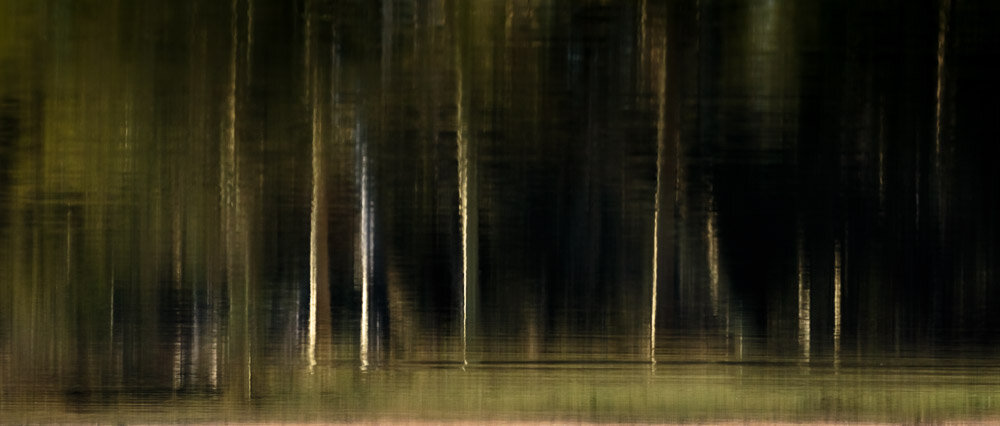Photography at Ndumo Game Reserve
This website uses affiliate links, meaning: at no additional cost to you, I earn a small commission if you click-through and make a purchase. As an Amazon Associate I earn from qualifying purchases. I only feature products that I believe in and use.
Your support means the world to me and allows me to host this website. Thank you!
It’s only human nature to value something that is hard won and the same is true of photography. Especially when it feels as if you aren’t getting anywhere.
That’s what it felt like for me on a recent trip to Ndumo, a small game reserve along the Pongola river and border with Mozambique.
Frederick Courteney Selous, the famous hunter, described the area as having the “thickest thornveld in Africa” and I can only report that nothing has changed.
The tangle of thorns and brush make wildlife viewing virtually impossible and as we drove around the meagre road network my heart sank and I thought to myself, “four more days of this...What have I done?”
The small cement bridge over one of the streams that feed Nyamithi pan collapsed a few years back and since then the waters in the pan have receded. Leaving the only hide in the reserve high and dry, far from the waters edge.
The fabled fever trees are still there but their reflections no longer decorate that dark salty water. Those trees and that water was the reason I was standing there in the first place.
That shot was gone. What now?
Elliot Erwitt said. “Photography is an art of observation. I find it has little to do with the things you see and everything to do with the way you see them.”
For me, this was becoming apparent as I struggled to come to terms with losing the shot of the fever trees over the water.
Sometimes, all the planning gets in the way.
When it goes awry, there’s no back up and we spend our time searching for the impossible or imagined shot instead of working to see the many wonderful opportunities close by.
Suddenly there is the fear that we will return with nothing.
It wasn’t until the following day that we met Bongani. He’s served twenty-six years in the hot, flat, thorny reaches of Maputaland and he was able to reveal the country to me.
He’s a bird guide and only becomes truly animated when teasing out the secretive little species that make this area one of the best birding regions in South Africa.
Ndumo is home to 57% of all the birds in the country. A staggering number for 10,000ha.
When I asked him what his favourite bird was, he answered immediately. “Narina Trogon.”
When I told him that mine was the African Hoopoe he said nothing but before long he’d found a pair for me.
Bongani didn’t just bring out the birdlife he also showed us the secret spaces between the thorn thickets. Places like the Fig tree forest at Shokwe pan.
Cavernous and cathedral like, the tree trunks rise into the canopy and at their summits the Tinkerbirds play: Red fronted and yellow rumped.
I was captivated. Torn between birds I would never see again and the wonderful shape of the trees revealed by the hanging sun.
Thick wet red light spilled over them like paint, catching each corbel and flute and drenching the rest in warm green shadows.
Suddenly, with my heart opened and my eyes wide I found a way to see Ndumo for the first time.
For me, this newfound vision was all about light and shadow. Having faltered at the start, I felt a growing sense of certainty.
I raised the camera to my eye and pressed the shutter button.
Accommodation
It’s clear that KZN wildlife have spent some money at Ndumo. The game fence is fixed along the southern boundary. The 7 chalets all have new en suite showers and lavatories. There is a shiny new Landcruiser dressed up in the Ndumo regalia and some new, larger chalets that look like they will be ready soon.
Cooking facilities in the chalets are basic. A braai area, a kettle, some basic utensils a microwave and a fridge. There is no hot plate or toaster. Separate communal cooking facilities are available with large deep freezes and a gas range cooker and oven. We had a gas cooker with us and used it for breakfasts and the braai for supper.
Bookings can be made on the KZN wildlife website.
To book activities, either game drives or bird walks, you need to book in advance at reception. At time of writing the card facilities were not functional so it is a good idea to bring cash to settle these amounts.
There is a Spar supermarket and ATM in the centre of Ndumo village - a raucous but friendly enough place a few klicks down the road from camp.
Activities
Ndumo conducts both drives and walks (guides permitting). Drives are R270 pp and Walks are R160pp.
The walks are to 4 different areas, Shokwe Pan, Nyamithi pan, the Sand forest and the Pongola river area. Discuss with the guide what species you wish to focus on.

















